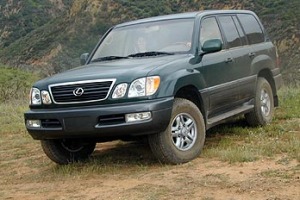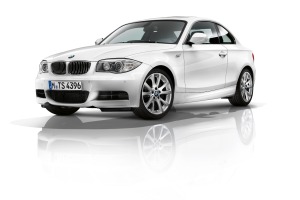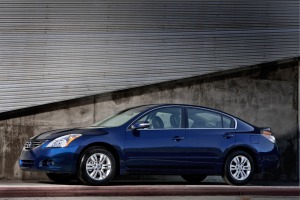
Whether you take a Saturday afternoon or a 20-minute trip to the local car wash, keeping your car well maintained and looking its best will draw better resale prices down the road — a fact any vehicle owner can appreciate.
Unfortunately for the average couch potato, taking care of your vehicle's finish won't happen while munching on Doritos, sipping a Bud and watching professional wrestling on the tube. In the immortal words of Roger Penske, "effort equals results."
In this first of three installments, we're going to get back to basics with exterior care. In following segments, we'll cover the interior, engine and finally (for those of you who are absolute fanatics) a segment on what it takes to get your prized possession ready for the show circuit.
Before we start, there are some simple rules to remember.
First -- No matter what stage of the "surface care" game, always have the car parked in a cool, shady place when you're washing, waxing or performing any type of maintenance to the vehicle's surface. Direct sunlight can cause water spots; even more damaging is the effect of sunlight on polishes and waxes -- they can bake onto the finish, making them difficult to remove and promoting further scratching of your paint.
Second -- Be sure to have a good stock of 100 percent cotton terry cloth towels on hand for applying and removing detail products.
Third -- You also want to be sure to utilize the correct products at the correct stages to prevent unnecessary damage to your car's finish. Trying to "protect" your car's paint with rubbing compound is not a good thing.
Fourth -- Keep in mind, the average new clear-coat finish on a vehicle (primer, base, color, and clear coat) is only 4.5 mills thick - that's the same thickness of two sheets of The New York Times Sunday sports section.
OK. With that out of the way, let's get to work. Getting your paint back to showroom condition involves a four-step process: washing, cleaning, polishing and protecting.
The most critical step in keeping your car's finish in tip-top shape is frequent washing. Washing removes the loose surface contaminates which can gradually bond to the paint, leaving a gritty residue that could cause scratching when polishing later. Always be sure to use a "wash" that is formulated for automotive surfaces (such as Meguiar's Soft Gel Wash or Mothers California Gold Car Wash). Normal dish soap, laundry soap and household cleaners are a big no-no, as they are designed to remove and dissolve grease and oil. These same detergents also strip the wax off of a car's finish and in some cases, "detergent burn" the paint. Hose off the entire vehicle to cool the paint if it is warm and to rinse off any loose contaminants.
Wash the car thoroughly, working from the top down, utilizing a lamb's wool washing mitt or terry cloth towel. Detailers prefer these, as the nap of the lamb's wool and terry cloth draws the dirt particles away from the paint.
For convertible tops, dip a soft bristle scrub brush in the suds and work the dirt out of the grain using small, circular strokes. If the top is heavily soiled or stained, use a convertible top-specific cleaner, like Mothers Convertible Top Cleaner, which is ph-balanced to safely lift dirt from cloth and vinyl tops without damaging the stitching. Dry the car thoroughly with a soft, absorbent chamois or a terry cloth bath towel.
Now that your pride and joy has been washed, take some time to evaluate the condition of the paint. Every day, the paint on our vehicles is subjected to a wide range of maladies: ultraviolet radiation, tree sap, industrial fall out, acid rain, bird droppings and unlucky insects. Believe it or not, all of these daily trials and tribulations can not only dull the shine of your paint, but permanently damage the surface as well.
When looking closely at your paint, does it have "above surface defects" -- a thin film of tree sap, tar or other deposits clinging to the surface? Or do you see "below surface defects," like scratches, oxidation and acid rain etching? These are easily remedied by cleaning the surface. If you're lucky and don't have any of these telltale signs, you can go straight to polishing and waxing.
If washing your vehicle removes any loose contaminates from the surface, the cleaning removes the particles that have adhered to the paint. To do this, cleaners with mild abrasives are used to gently remove paint defects. Contrary to what you're probably thinking, begin with the least abrasive product (like Meguiar's Body Scrub or Mothers Pre-Wax Cleaner) and test an area with the worst defect and see if the product successfully eliminates the problem. If not, go on to a product which is more abrasive. Be sure to use the less abrasive products on areas with fewer problems.
While rotary or orbital buffers can be used, the average person should apply cleaners by hand, avoiding the possibility of "burning" the paint with too much friction. Use small circular, overlapping strokes with a foam applicator pad. Always remember to let the product do the work and never use hard pressure when cleaning, waxing or polishing. You want to remove the surface defects, not grind them back into the paint. Cleaning a section of the vehicle at a time, remove the cleaner with a terry cloth towel (folded into fourths) utilizing one side to break the cleaner's surface, flipping the towel over to a clean side to remove any additional residue. Your paint should now feel as smooth as glass.
Now, it's time to build gloss, depth and vibrance to your paint. Polishing the surface conditions and restores the natural oils your paint once had. Polishing also creates the ever-coveted "wet look" and high reflection. While light paints such as white, silver and tan may not show much change, darker colors like black, burgundy and dark blues will reflect light like a mirror after proper polishing. Meguiar's Show Car Glaze and Mothers California Gold Sealer and Glaze are two polishes that build unbelievable gloss.
As with cleaning, apply by hand using small circular, overlapping strokes with a foam applicator pad--one section at a time--removing the polish with a terry cloth towel after the product has begun to "haze-up" on the surface. Don't allow the polish to dry up completely, as this will only scratch the surface as you attempt to get the polish off.
With the surface looking as good as new, it's time to protect all your hard work...and the paint. Waxes, silicones and polymers ward off the elements with a layer of protection while enhancing gloss. In most cases, a good quality carnauba-based wax (in either paste or liquid form) will provide protection for three or four months, providing your car is garage-kept. If your vehicle is continually exposed to the elements (depending on your geographic location, amount of acid rain, etc.), more frequent waxings are necessary to protect the finish.
Contrary to popular belief, you can't get 100 percent carnauba wax out of a bottle. "Pure carnauba" is literally a block of high-grade Brazilian wax, which, by itself, would only scratch the paint. All waxes - even the so-called "100 percent pure carnauba" waxes -- contain a blending of silicones and polymers. What does differ is the amount of these additives. Waxes with fewer polymers generally do not last as long under extreme conditions as those that are polymer-based. Deciding which type to use is a matter of preference, the contaminants present and the amount of contaminants your vehicle's paint is exposed to.
As before, use small circular, overlapping strokes with a foam applicator pad to distribute the product (Meguiar's Gold Class Wax or Mothers Natural Formula Carnauba Wax provide easy to apply and remove formulations). Working a section of the vehicle at a time, remove the wax with a terry cloth towel (folded into fourths) utilizing one side to break the surface, flipping the towel over to a clean side to remove any additional residue.
Detailing your vehicle may take more elbow grease than driving it to the local car wash, but the results obtained will not only make your car look as good (if not better) than the day it rolled off the showroom floor, but you'll be the envy of the neighbors as well.
For additional information on the products suggested above, point your browser to the Meguiar's Car Care site at http://www.meguiars.com and the Mothers Web Site at http://www.mothers.com.







